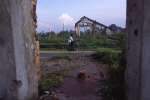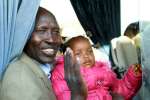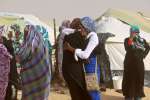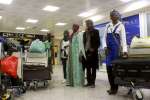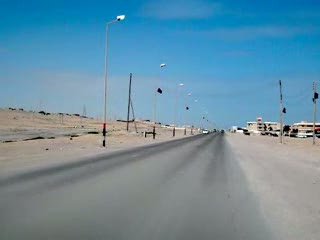Fresh fighting in the New Year triggers displacement in Libya
News Stories, 16 January 2015
GENEVA, January 15 (UNHCR) – The UN refugee agency on Friday reported that stepped up fighting in Benghazi and other towns and cities in eastern Libya since the start of the year has sparked fresh displacement.
The displacement has been centred around Benghazi, Derna, and near the Gulf of Sidra in Ben Jawad and Ras Lanuf. Many people have had to flee for a fourth or fifth time, making numbers hard to estimate, but in Benghazi alone the local council is reporting that around 90,000 people are unable to return home.
UNHCR estimates that the fresh displacement brings the number of internally displaced people across Libya to about 400,000. In addition, Libya is host to nearly 37,000 refugees and asylum-seekers of different nationalities whose humanitarian conditions are increasingly precarious.
Near the national capital Tripoli in the west, NGOs and the local council estimate more than 83,200 people are living in settlements, schools and abandoned buildings. Many are unable to access health care or education for their children. A significant number have limited ability to access cash for food.
Most have been displaced for three to six months with increasing numbers being hosted in public facilities such as schools. As their cash savings dwindle they are unable to pay for housing rental. The current winter months are especially tough as temperatures in Tripoli, Benghazi and southern towns are below 10 degrees Celsius.
In south-west Libya, internally displaced people from the town of Awbari are facing difficulties in their daily lives as services have been severely disrupted by fighting between rival tribal groups. The current fighting has meant that schools, hospitals and markets remain completely inaccessible.
Shortages of fuel, electricity, water and food are being reported by local crisis committees and NGOs who say some 18,500 people from Awbari are currently displaced in six towns: Sabha, Wadi Shati, Jufra, Ghat, Murzuq and Lewenat.
In the past seven months, UNHCR has distributed aid item to almost 28,000 people in Tripoli and other western cities, including to members of the Tawerghan community displaced since 2011. On January 5, in partnership with the Tomazeen NGO in Libya, UNHCR delivered sleeping mats, plastic sheets and kitchen sets to 150 displaced families in the southern towns of Ghat, Lawenat and Tahala.





